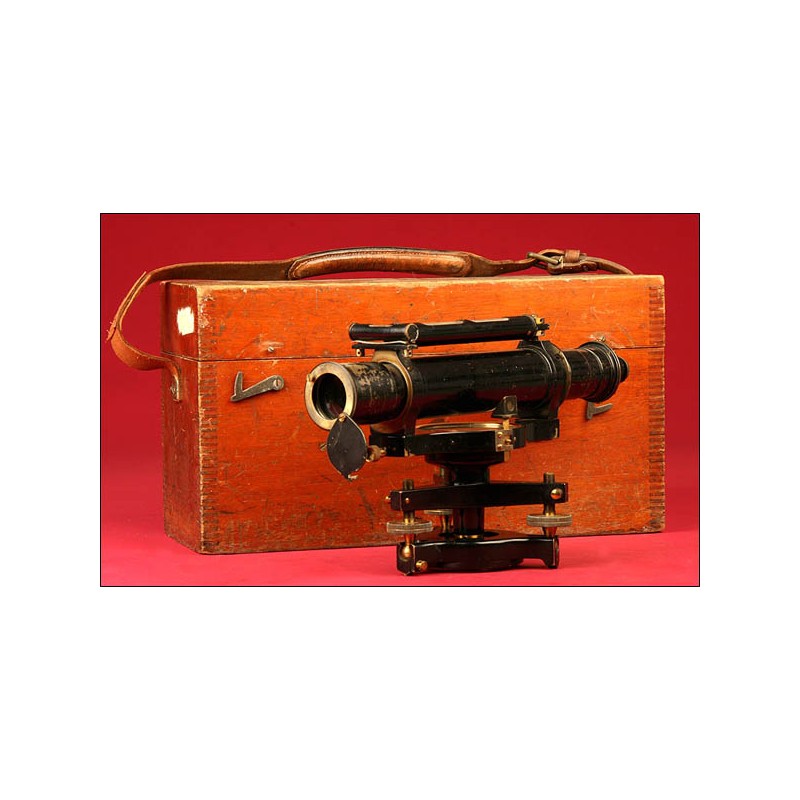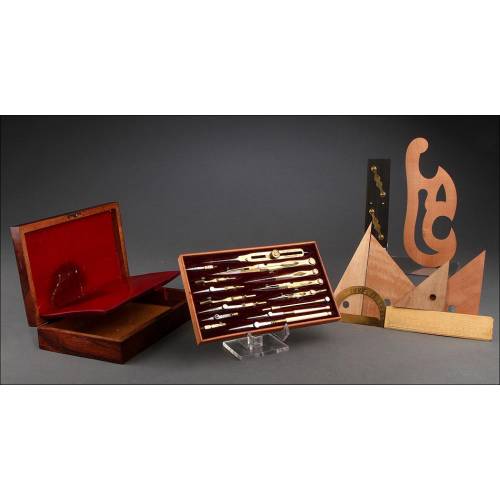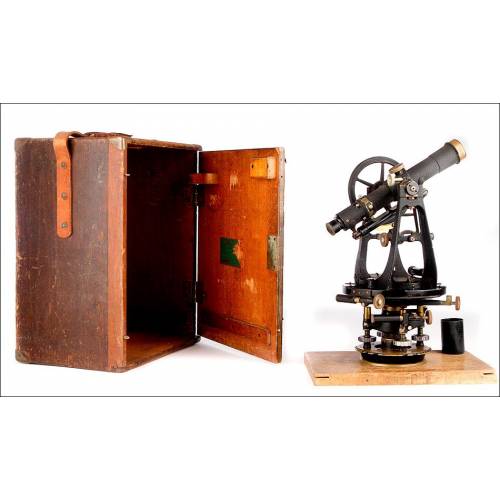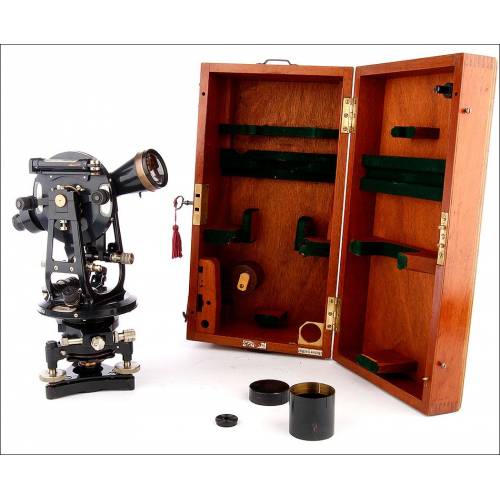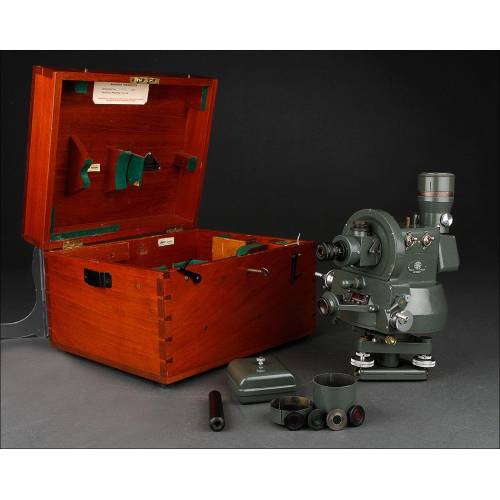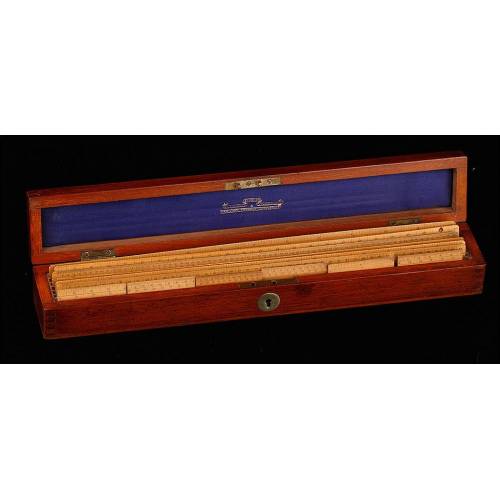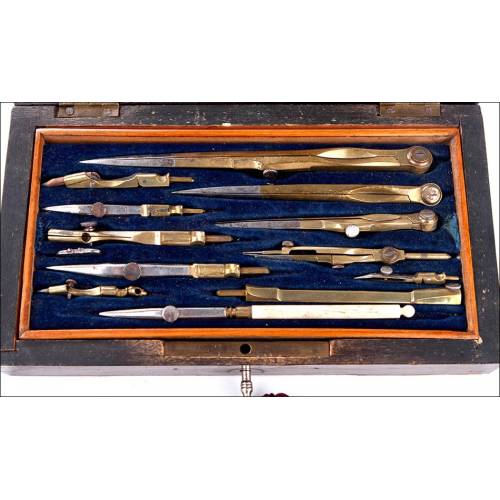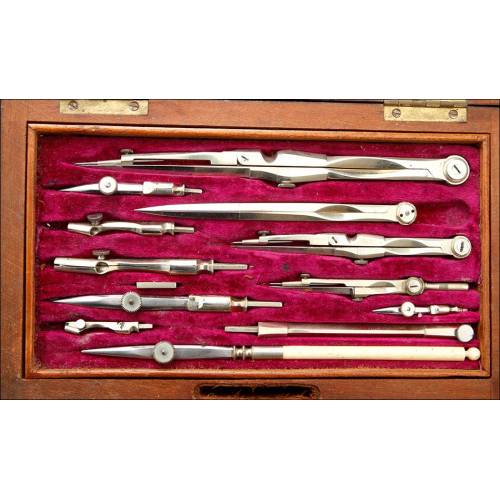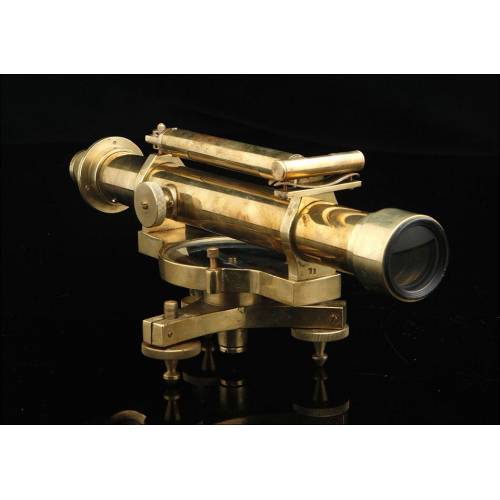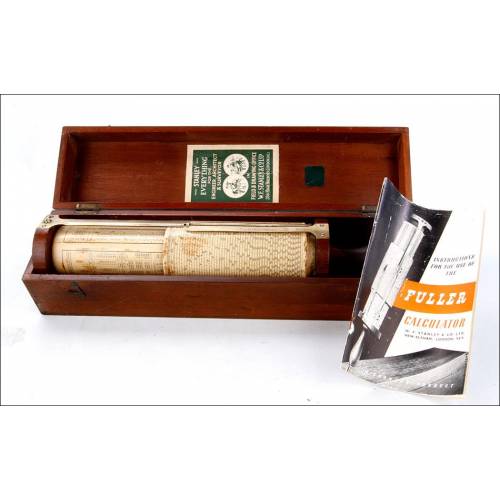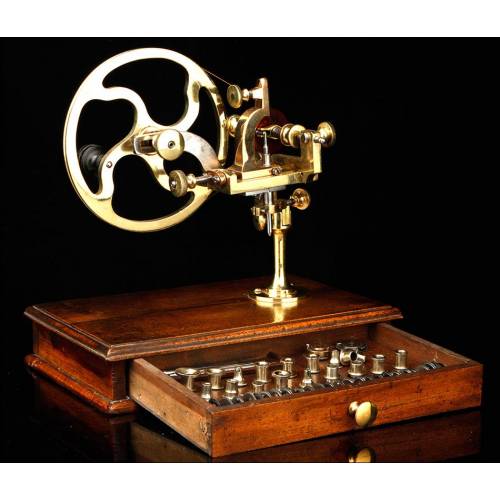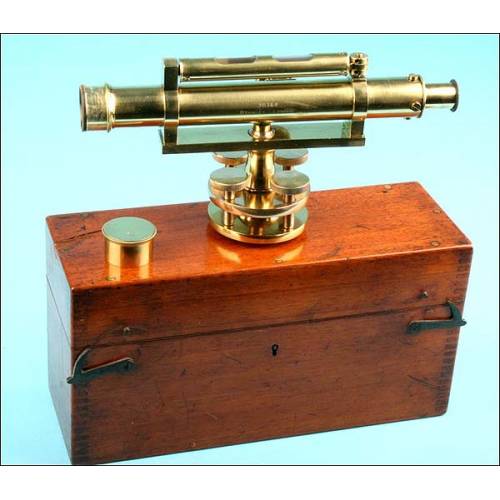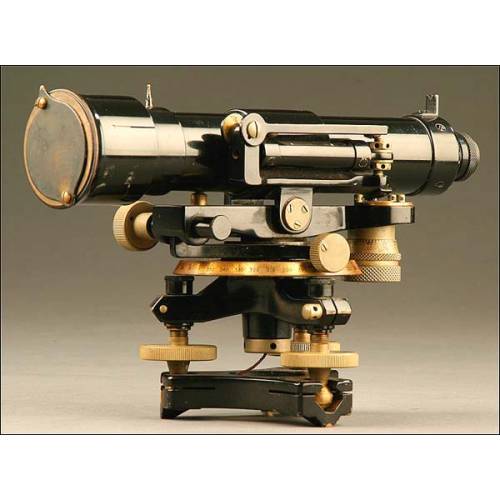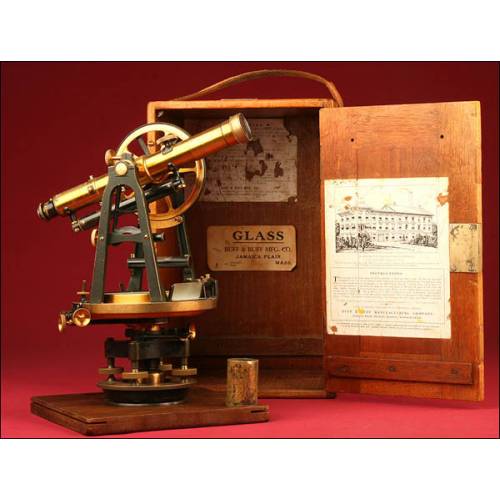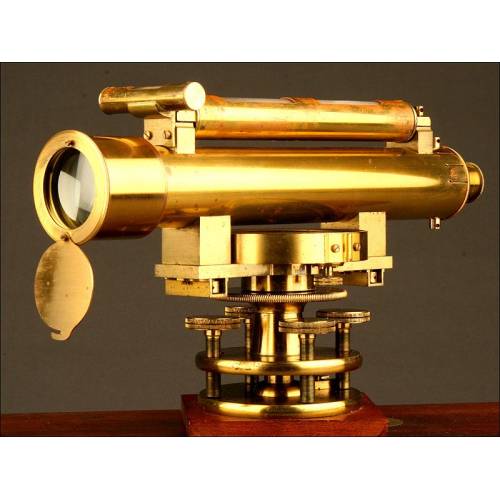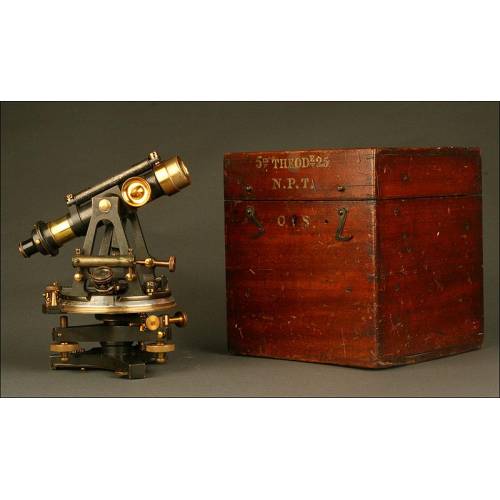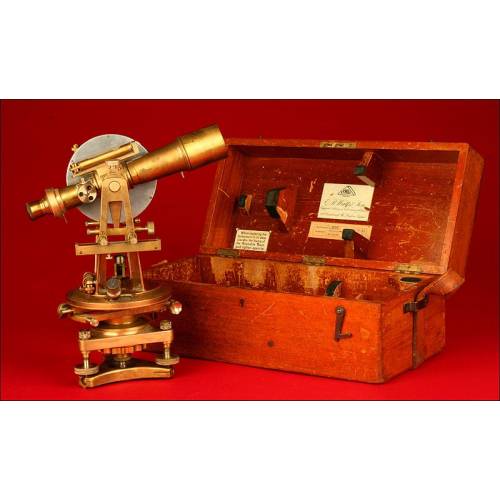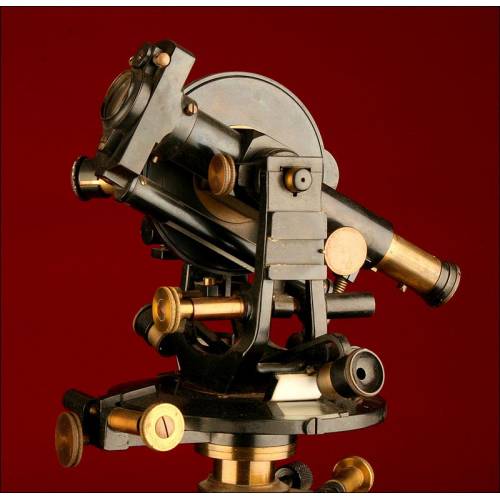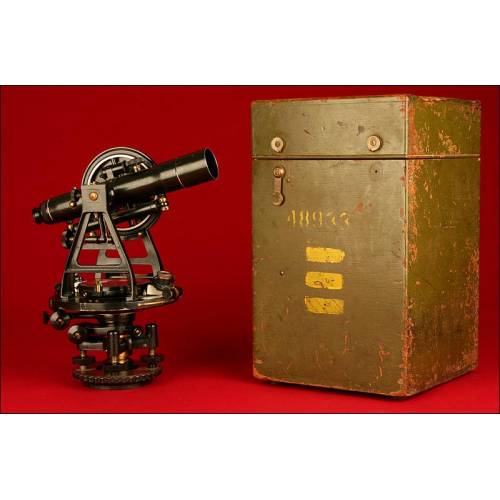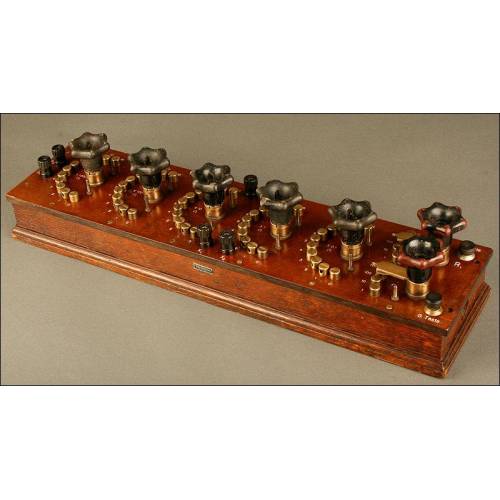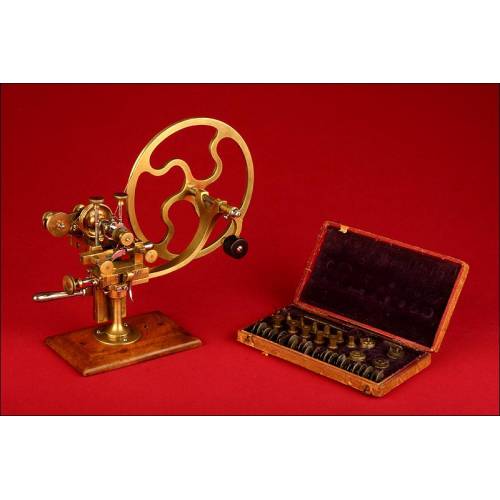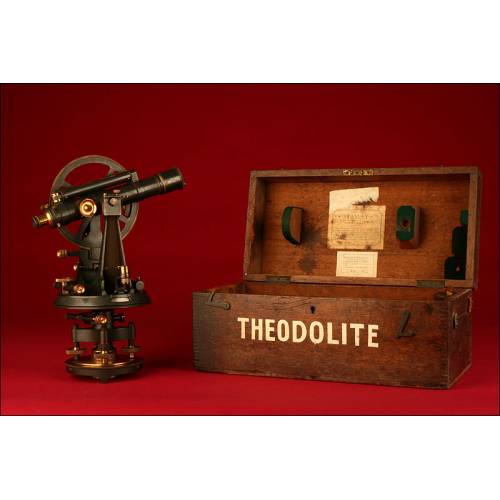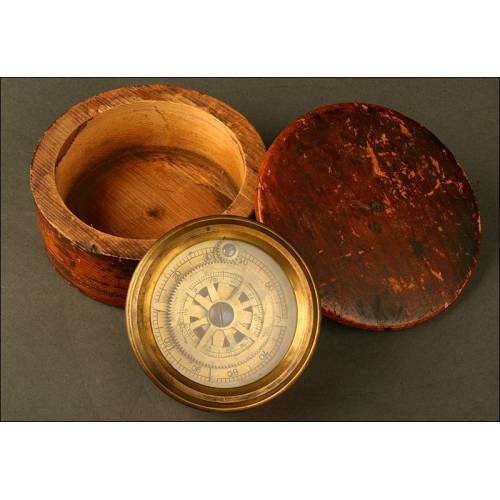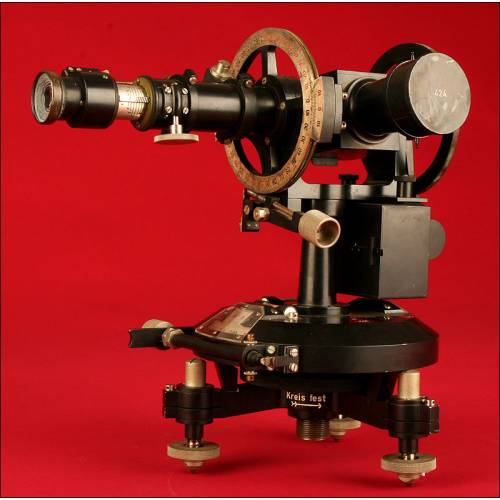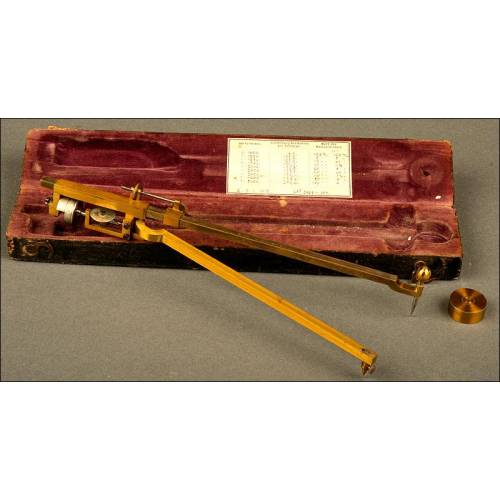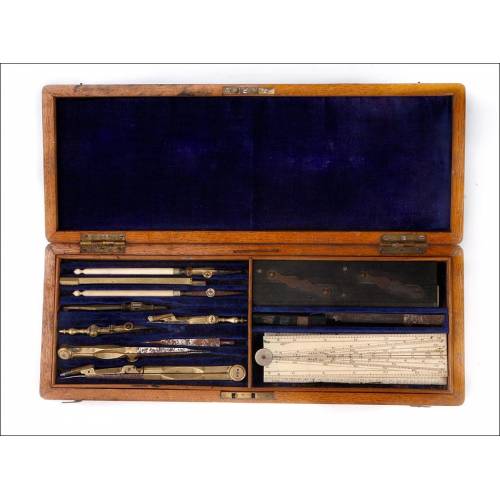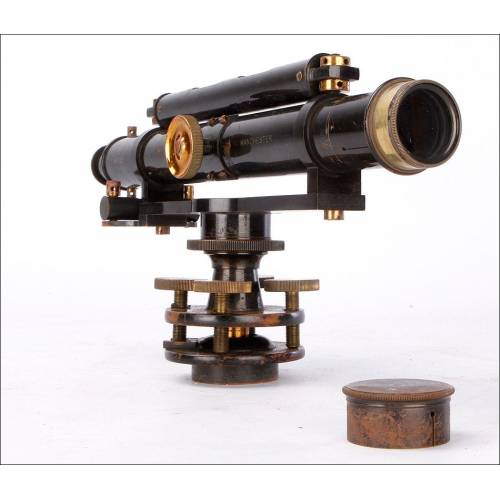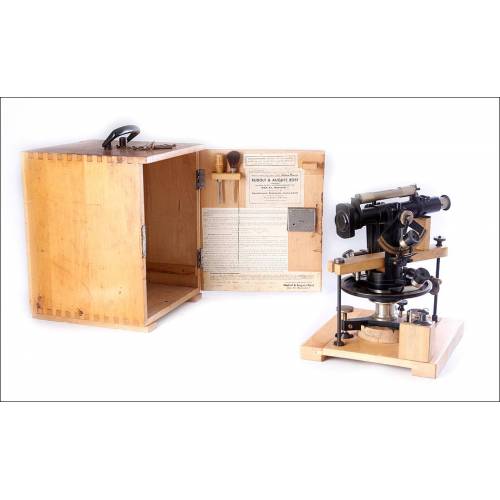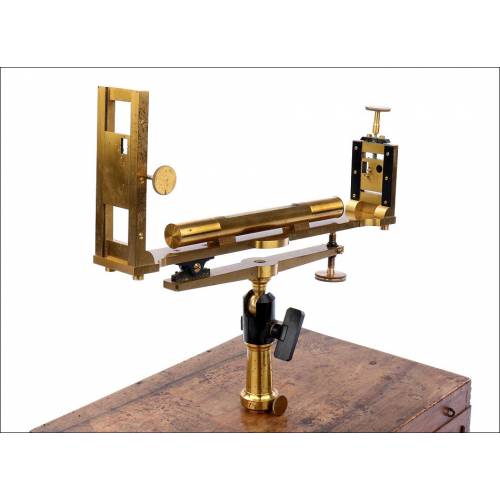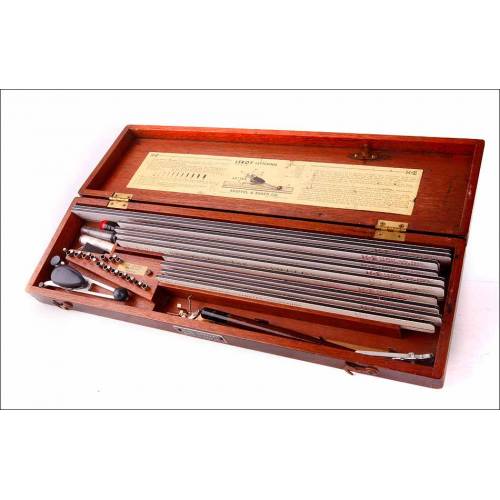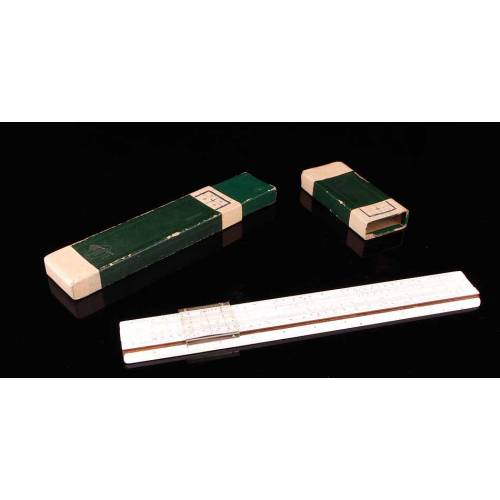J-375
Incredible Large Cook & Sons Surveyor's Level. 19th century.
Large Fixed Topographer's Level. 19th Century.
Sold!
Incredible Large Size Surveyor's Level from the house of Cook & Sons. 19th Century. Magnificent topographical apparatus, in very good technical state of preservation, with its original case. The rectangular wooden box. It is in a very good state of preservation, with the lenses in good condition, and there is only some rubbing on the black lacquer, which appears jumped in some areas. Attached protective lens cap in front in perfect condition and practically new double top drop level. Make: T Cook & Sons, London & York, nº14712. This is a very well preserved large piece with all its original parts. Surveying is a science that studies the set of procedures for being able to determine the relative positions of points on and below the surface of the earth. This is achieved by combining measurements according to the three elements of space: distance, elevation and direction. Topography is responsible for explaining the procedures and operations of field work, the methods of calculation or data processing, and the representation of the terrain on a plan or topographic drawing to scale. The set of operations necessary to determine the positions of points on the surface of the earth, both in plan and in height, the corresponding calculations and the representation on a plan (field work + office work) is what is called "Topographic Survey". The topographic level is an instrument used in topography and surveying in what is called field work. It is an instrument that represents a reference with respect to a horizontal plane. This device helps to determine the difference in elevation between two points with the help of a stadia. There are many different types used according to the needs: hose, hand-held or fixed. The present one is a fixed level, the sophisticated version of the hand level, since instead of being held by hand, it is placed on a tripod, in addition to the fact that the optics have more magnification and the drop is much more sensitive. This level presents a problem, and that is that as the device is operated, it is necessary to be continuously verifying, and especially when it is rotated, that the drop remains centered, this is done with the 4 leveling screws which move in pairs, and always maintaining tension so that the device does not move. This problem would be overcome over the years when automatic levels came on the scene thanks to the advance of technology. T. Cooke & Sons, York & London, and later even "and Cape Town". Thomas Cooke was born in 1807 in Allerthope, Yorkshire, into a poor family. He had to overcome many difficulties, but finally managed to study mathematics and optics. At the age of 22 he made his first achromatic lens, which led him to establish a small optics firm in York. Thanks to meticulous and high quality work, he managed to become the manufacturer of the famous telescope that bears his trademark.After his death in 1868 the firm was followed by his sons, making instruments of the same quality that his father had achieved. Magnificent apparatus of great importance of the time in which the technology advanced a little slower. Measurements: 22 x 43 cm. Weight: 9 kg.

